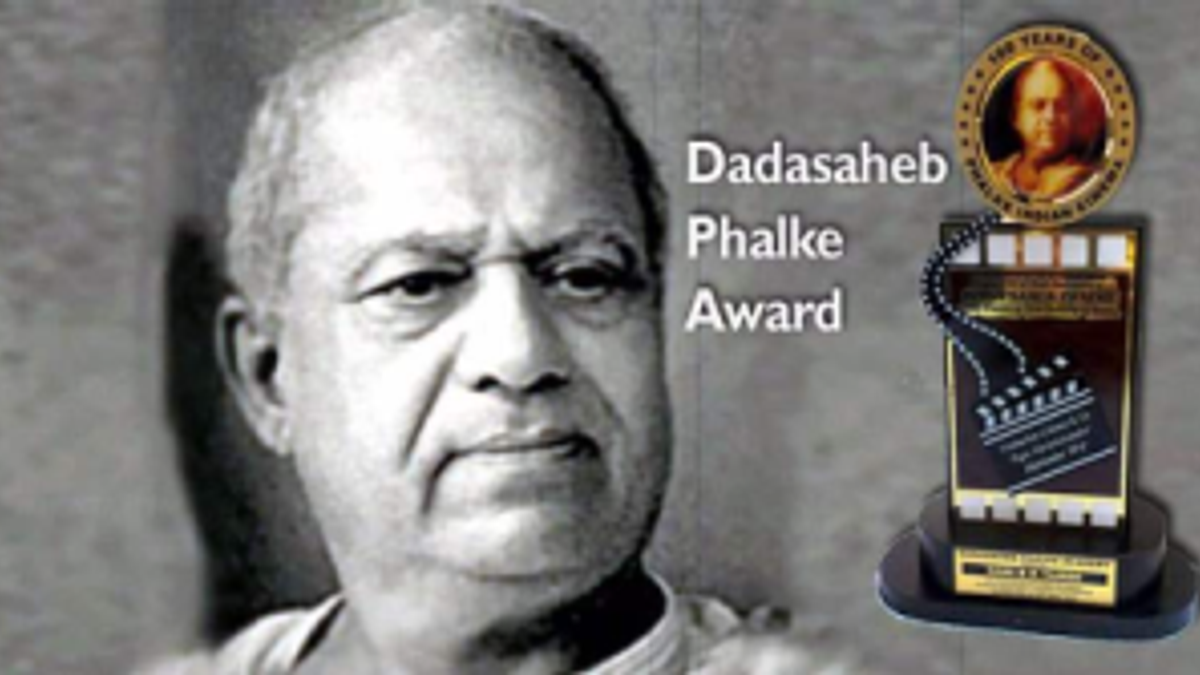As Mithun Chakraborty receives the Dadasaheb Phalke Award, his legacy as one of India’s most versatile and beloved actors is firmly cemented. From his early struggles to his meteoric rise to fame, and from his iconic roles to his status as a global icon, Mithun has proven time and again that he is not just a star, but a legend in the truest sense of the word.
Mithun Chakraborty Honored with Dadasaheb Phalke Award 2024: A Cinematic Journey of an Icon
Mithun Chakraborty, the quintessential “Disco Dancer” of Indian cinema, has been honored with the prestigious Dadasaheb Phalke Award for 2024, acknowledging his immense contribution to the film industry. The award, considered the highest recognition in Indian cinema, is named after Dadasaheb Phalke, the father of Indian cinema, and is bestowed upon individuals who have significantly shaped and enriched Indian filmmaking. With this accolade, Chakraborty joins an illustrious list of past recipients, which includes the likes of Raj Kapoor, Lata Mangeshkar, and Amitabh Bachchan.
Mithun’s recognition not only celebrates his dynamic career, spanning more than four decades, but also underscores his versatility and ability to navigate multiple genres, languages, and cinematic styles. This article delves into the multifaceted career of Mithun Chakraborty, examining his early struggles, iconic roles, and enduring legacy that made him deserving of this coveted award.
The Early Years: From Kolkata to Stardom
Born Gouranga Chakraborty in Kolkata on June 16, 1950, Mithun came from humble beginnings. Raised in a lower-middle-class Bengali family, he endured personal tragedies, including the death of a sibling, which left a profound impact on him. Before entering the world of cinema, Mithun dabbled in politics and even flirted with leftist ideologies. However, his passion for the arts drove him toward the National School of Drama (NSD), where he received formal training in acting.
Mithun’s journey to stardom was far from easy. He faced significant hurdles, particularly due to his unconventional looks by Bollywood standards at the time. In a period dominated by fair-skinned actors, Mithun’s dark complexion was initially viewed as a disadvantage. Yet, his tenacity, combined with his raw talent, helped him break through these barriers.
Breaking Through with “Mrigayaa”
Mithun’s first brush with fame came in 1976 when he made his debut with Mrigayaa, directed by the acclaimed filmmaker Mrinal Sen. The film, which tackled issues of tribal exploitation, earned Mithun the National Film Award for Best Actor, a recognition that immediately marked him as a serious performer. Mrigayaa remains a pivotal moment in Mithun’s career as it provided the foundation for his future successes.
While Mrigayaa earned him critical acclaim, Mithun soon realized that to sustain a long career in Bollywood, he needed to diversify his repertoire beyond art-house cinema. He gradually shifted toward mainstream commercial films, where his talent, combined with a unique on-screen persona, began to capture mass audiences.
The Rise of the Disco Dancer
If Mrigayaa was the film that introduced Mithun as a serious actor, Disco Dancer (1982) cemented his status as a bona fide superstar. Directed by Babbar Subhash, the film capitalized on India’s burgeoning fascination with disco music, and Mithun’s portrayal of Jimmy, a street performer-turned-disco sensation, struck a chord with audiences not only in India but across the world, especially in the former Soviet Union.
The film’s soundtrack, composed by Bappi Lahiri, was a game-changer. Songs like “I Am a Disco Dancer” became cultural phenomena, with Mithun’s dance moves becoming iconic. In fact, Disco Dancer established Mithun as one of the first Bollywood actors to be recognized for his dancing skills, a trend that would inspire many future generations of actors. The film went on to gross unprecedented figures at the box office and was particularly successful in international markets, marking Mithun as a global icon.
Versatility and Range: Exploring Different Genres
While Mithun was often associated with commercial potboilers in the 1980s, his versatility as an actor allowed him to explore a variety of genres. He seamlessly transitioned between different kinds of roles, from action-packed thrillers to intense dramas, and even lighthearted comedies. His ability to fit into roles that ranged from action heroes to sensitive characters helped him stay relevant throughout his career.
Action Hero: Mithun’s role in action films, especially throughout the 1980s and 1990s, made him a favorite among the masses. Films like Wardat (1981), Ghulami (1985), and Agneepath (1990) showcased his physicality and intensity, making him a staple in action cinema.
Dramatic Depth: Despite being a popular commercial actor, Mithun continued to return to more challenging, dramatic roles. His performance in films like Tahader Katha (1992) and Swami Vivekananda (1998) garnered critical acclaim, with the former earning him yet another National Film Award for Best Actor. These roles allowed him to display the full range of his abilities, showing that he could balance both mass-appeal films and critically-acclaimed performances with ease.
Comedy and Lighter Roles: In addition to action and drama, Mithun also ventured into comedy, delivering memorable performances in films like Pyar Ka Mandir (1988) and Shaukeen (1982). His ability to switch between serious and comedic roles further endeared him to a wide variety of audiences.

Mithun Chakraborty: A National and International Icon
One of Mithun’s most remarkable achievements is his global appeal. In the 1980s, while most Bollywood stars focused on the domestic market, Mithun had become a massive star in the Soviet Union, Egypt, and parts of Africa. His films were dubbed in multiple languages and released in international markets where Indian films previously had limited reach. This ability to transcend linguistic and cultural barriers is what truly sets Mithun apart from many of his contemporaries.
In India, Mithun’s influence stretched beyond just cinema. His iconic roles and dance numbers made him a trendsetter in fashion and culture. The “Mithun Style” dance moves, often characterized by energetic and acrobatic movements, became a craze, inspiring legions of fans to emulate him. His influence on Indian popular culture is still visible today, particularly in the way dance and music are integrated into Bollywood films.
Transition to Television and Politics
In the later stages of his career, Mithun began to focus on television and politics. In the mid-2000s, he became a household name once again through his stint as a judge on popular dance reality shows like Dance India Dance. His involvement in these shows allowed him to mentor a new generation of dancers, further cementing his legacy as a pioneer of dance in Indian cinema.
Simultaneously, Mithun ventured into politics. He joined the Trinamool Congress in West Bengal and was even elected to the Rajya Sabha in 2014. Though his political career has been marked by controversies and he eventually stepped down from his parliamentary role, Mithun’s influence on Indian society remains strong.
The Legacy of Mithun Chakraborty
Mithun Chakraborty’s contribution to Indian cinema is not merely in the number of films he has acted in, but in the way he has helped shape the very fabric of Bollywood. His ability to balance commercial success with critical acclaim, his global reach, and his pioneering role in introducing dance as a crucial element of mainstream cinema have left an indelible mark on the industry.
The announcement of the Dadasaheb Phalke Award 2024 is a fitting tribute to Mithun’s illustrious career. The award, presented by the Government of India, recognizes his achievements in a career that has spanned over 45 years and more than 350 films. The news was met with widespread acclaim, with fans, colleagues, and critics praising the actor for his contributions to Indian cinema. Mithun himself was deeply moved by the honor, stating, “This award is not just mine. It belongs to every single person who believed in me, who supported me throughout my journey”
The Timelessness of Mithun Chakraborty
As Mithun Chakraborty receives the Dadasaheb Phalke Award, his legacy as one of India’s most versatile and beloved actors is firmly cemented. From his early struggles to his meteoric rise to fame, and from his iconic roles to his status as a global icon, Mithun has proven time and again that he is not just a star, but a legend in the truest sense of the word.
With the Dadasaheb Phalke Award now added to his long list of achievements, Mithun’s story continues to inspire new generations of actors, filmmakers, and fans. His ability to connect with audiences across the world, his contribution to the growth of Indian cinema, and his indomitable spirit make him a deserving recipient of Indian cinema’s highest honor.
Also Read: Tollywood’s Blockbuster August 2024: A Month of Unmissable Releases and Exciting Updates
Last Updated on Monday, September 30, 2024 10:10 am by Admin










